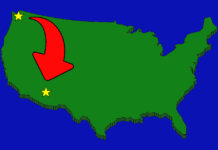
Through much of northwestern Pinal County and north into Maricopa County lives a community of people who have used the resources of the river for centuries.
As the non-Native American population in central Arizona grows at a dramatic rate, the Gila River Indian Community also is playing a key role in the rush to develop south of the Phoenix Metro area.
As early as 300 B.C., ancestors of the tribe, called the Hu Hu Kam, farmed the area of the Gila River between Florence and the Estrella Mountains. It is believed they are the ones who built the Casa Grande Ruins near Coolidge.
While initially being migratory hunters and gatherers because of the reliable water of the river, the tribe soon developed extensive irrigation systems for crops such as corn, cotton, beans and squash. They supplemented their farming with the natural resources of the area.Venison and small game were abundant in the area. Cactus fruit, prickly pear pads and agave hearts were gathered at the right times of the year.
Marshy areas along the river provided the cattail grasses for basket weaving, and silty areas of the river basin provided the clay for pottery. The water, brought into the desert by the river, was the life-blood. Migratory peoples moved among the river tribes, trading furs, shells and other commodities in return for the agricultural products produced here along the river. Trade became an important part of Gila River tribal life.
In the early 1500s, the peaceful tribes welcomed the Spanish into the area, and Father Keno moved through the area establishing missions. Juan Bautista de Anza camped among the tribes in 1774. They called the place “Las Lagunas del Hospital.”
In the 18th century, the Akimel O'odham (Pima) welcomed the exiled Pee Posh (Maricopa). Increased hostilities on the Colorado River had pushed the Pee Posh up the Gila. They formed an early bond with the tribes already established along the Gila, and as the Europeans increased in numbers they formed an alliance that would lead to their partnership in a single tribal council that continues today.
The partnership officially began in 1859 when the community of villages was established by executive order in Washington, D.C. In 1939 the community was incorporated as the largest reservation in the Phoenix metropolitan area.
It covers 600 square miles and today borders the communities of Phoenix, Laveen, Goodyear, Chandler and Gilbert on its northern boundaries and Maricopa, Casa Grande and Coolidge at the southern boundary.

![‘Flying Bucket Fire’ doubles size, causes $200K in damage Tucson's Northwest Fire District crew members assist in firefighting efforts on the "Flying Bucket Fire" approximately 15 miles southwest of Maricopa on May 8, 2024. [Northwest Fire District]](https://www.inmaricopa.com/wp-content/uploads/2024/05/northwest-fire-district-050824-flying-bucket-fire-01-218x150.jpg)
![GAME OVER: The city government tried to get into gaming. It failed Maricopa Esports [Victor Moreno]](https://www.inmaricopa.com/wp-content/uploads/2024/05/263342f5-13e7-4668-838c-f574392086fb-218x150.jpg)



![Rizz party organizers say city ‘lying’ One of several flyers for a "TikTok rizz party" is taped to a door in the Maricopa Business Center along Honeycutt Road on April 23, 2024. [Monica D. Spencer]](https://www.inmaricopa.com/wp-content/uploads/2024/04/spencer-042324-tiktok-rizz-party-flyer-web-218x150.jpg)
![Province writer opens the athlete’s mind in new book Tom Schuman, a Province resident, poses with a copy of his new book, "My Wide World of Sports," outside his home on May 2, 2024. [Monica D. Spencer]](https://www.inmaricopa.com/wp-content/uploads/2024/05/spencer-050224-tom-schuman-sports-book-web-01-218x150.jpg)






![JWP to see more restrictions Monday John Wayne Parkway [Brian Petersheim Jr.]](https://www.inmaricopa.com/wp-content/uploads/2023/03/991A6929-100x70.jpg)

![Traffic change to reduce backup at Villages intersection The intersection at Butterfield Parkway and West Edison Road on May 10, 2024. [Brian Petersheim Jr.]](https://www.inmaricopa.com/wp-content/uploads/2024/05/PJ_5644-100x70.jpg)
